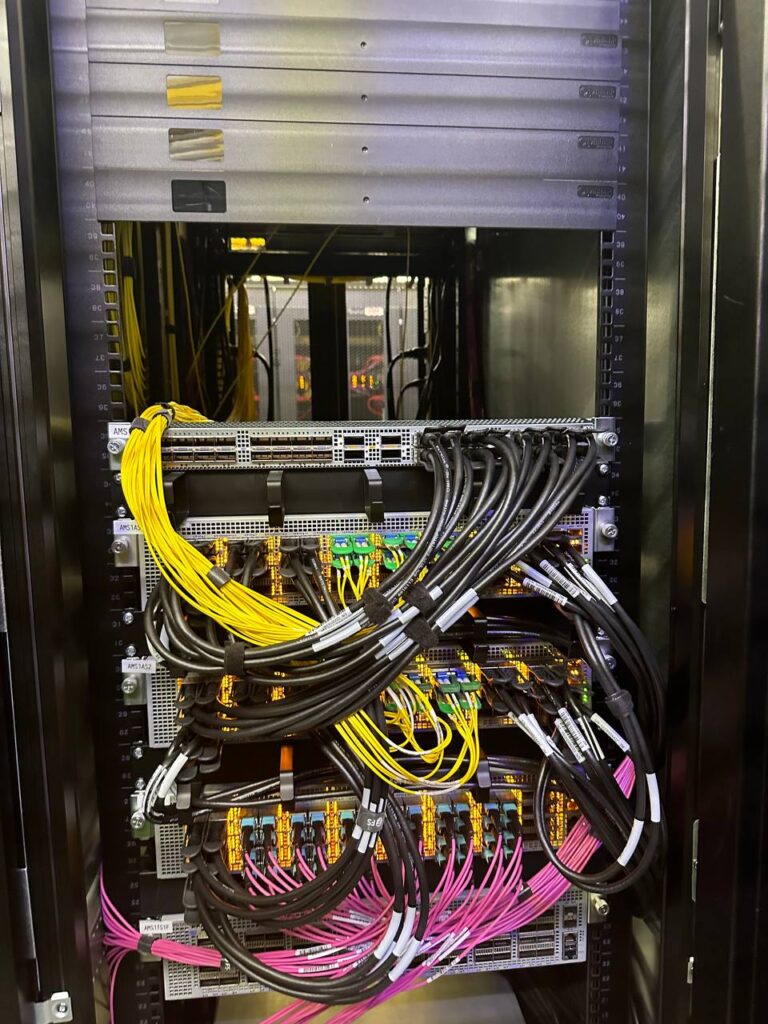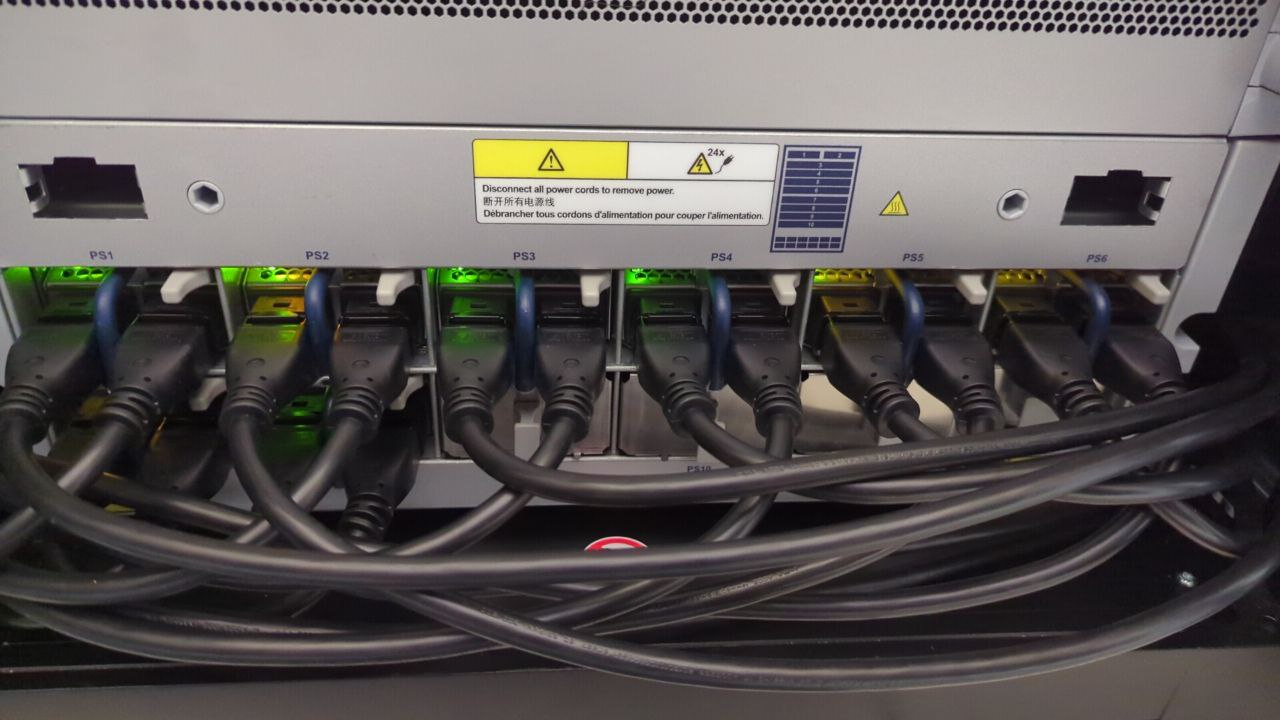Rack and Stack Services are pivotal in today’s digital world, where the efficiency of a data center directly impacts the success of a business. These services ensure that the backbone of IT infrastructure—housing servers and networking equipment that support daily operations—is organized and optimized for peak performance.
One of the key aspects of data center management is Rack and Stack Services, which involve the installation, organization, and management of hardware within server racks. This article provides an in-depth look at rack and stack services, offering insights into best practices, project management, and the role of specialized technicians.
What is a Rack?
A rack, in the context of data centers, is a physical framework designed to hold various hardware devices like servers, networking equipment, and storage units. These racks are essential for organizing and securing equipment in a compact and efficient manner, maximizing the use of space within a data center.
Racks come in different sizes and configurations, but they are typically standardized to fit most IT hardware. The most common size is a 19-inch-wide rack, with heights measured in “U” (rack units), where 1U equals 1.75 inches. These racks provide a structured environment, making it easier to manage and maintain the equipment.
Data Center Rack:
A data center rack is a specific type of rack used within a data center to organize and house servers, storage devices, and networking hardware. These racks are essential for maintaining an orderly data center, facilitating easy access for maintenance, and ensuring efficient airflow to keep equipment cool.
Great Lakes:
The term “Great Lakes” often refers to a manufacturer known for producing high-quality data center racks and enclosures. Their products are designed to support various IT infrastructures, offering solutions that are both durable and customizable to meet specific needs.
Next-Gen Data Center Providers: Trends, Tech & Top Picks
The Importance of Rack and Stack Services
Rack and Stack Services are critical to the smooth operation of a data center. These services encompass the entire process of installing, configuring, and managing hardware within server racks. Here’s why they are essential:
- Efficiency:
Properly organized racks allow for efficient use of space, which is especially important in data centers where real estate is at a premium. By optimizing the layout of servers and other equipment, data centers can maximize their capacity and reduce costs.
- Cooling and Airflow:
One of the biggest challenges in data center management is maintaining an optimal temperature to prevent overheating. Proper rack and stack techniques ensure that there is adequate airflow around the equipment, reducing the risk of overheating and equipment failure.
- Accessibility:
When servers and other hardware are properly organized within racks, it makes them easier to access for maintenance and upgrades. This can significantly reduce downtime and improve the overall efficiency of the IT infrastructure.
- Security:
Racks are often equipped with security features such as locking doors and side panels, which help protect sensitive equipment from unauthorized access.
- Scalability:
As businesses grow, so do their IT needs. Properly managed racks allow for easy expansion, enabling data centers to scale up their operations without major disruptions.
Rack and Stack Services: Harnessing the Full Potential of Rack and Stack Services

How to Rack and Stack Servers: Best Practices
Racking and stacking servers is a meticulous process that requires careful planning and execution. Here are some best practices to consider:
- Plan the Layout:
Before installing any equipment, it’s essential to plan the layout of the rack. Consider the power and cooling requirements of each device, and position them accordingly. Place heavier equipment like UPS units at the bottom of the rack to prevent it from becoming top-heavy.
- Label Everything:
Proper labeling is crucial for easy identification of equipment. Label the front and back of each device, as well as the cables, to make maintenance and troubleshooting more straightforward.
- Cable Management:
Poor cable management can lead to tangled wires and obstructed airflow, which can cause overheating. Use cable management accessories like cable ties and Velcro straps to keep cables organized and out of the way.
- Ensure Proper Ventilation:
Ensure that there is adequate space between devices to allow for proper ventilation. Use blanking panels to fill empty rack spaces, which helps direct airflow where it’s needed most.
- Test Equipment Before Installation:
Before installing any equipment into the rack, test it to ensure it’s functioning correctly. This helps avoid the hassle of uninstalling faulty equipment after it’s already been racked.
- Follow Manufacturer Guidelines:
Always follow the manufacturer’s guidelines for installing and configuring equipment. This ensures that the hardware is installed correctly and that warranties remain valid.
Rack and Stack Project Management
Rack and stack project management is the process of overseeing the installation, configuration, and management of IT equipment within server racks.
This involves coordinating various tasks, from initial planning to final deployment, ensuring that everything runs smoothly and on schedule.
Key Aspects of Rack and Stack Project Management:
- Project Planning: This involves defining the scope of the project, setting timelines, and allocating resources. It’s essential to have a clear understanding of the client’s requirements and objectives to ensure that the project meets their expectations.
- Resource Allocation: Assigning the right personnel and tools to the project is crucial. This includes selecting experienced technicians, procuring the necessary equipment, and ensuring that all team members are adequately trained.
- Risk Management: Identifying potential risks and developing contingency plans is a key part of project management. This could involve assessing the impact of equipment failure, unexpected delays, or changes in project scope.
- Communication: Keeping all stakeholders informed throughout the project is vital. Regular updates and progress reports help ensure that everyone is on the same page and that any issues are addressed promptly.
- Quality Control: Implementing quality control measures ensures that all equipment is installed and configured correctly. This includes conducting thorough testing and inspections to verify that everything is functioning as expected.
- Documentation: Keeping detailed records of the installation process, including diagrams, equipment lists, and configuration settings, is essential for future maintenance and troubleshooting.
The Role of Rack and Stack Technicians
Rack and stack technicians are specialized IT professionals responsible for the physical installation and configuration of hardware within server racks. They play a critical role in ensuring that data centers operate efficiently and reliably.
Key Responsibilities of Rack and Stack Technicians:
Hardware Installation:
Technicians are responsible for physically installing servers, networking equipment, and other hardware into the racks. This involves securing the equipment, connecting cables, and ensuring everything is properly aligned.
Cable Management:
Proper cable management is essential for maintaining an organized and efficient data center. Technicians use various tools and techniques to manage cables, ensuring they are neatly routed and secured.
Troubleshooting:
If any issues arise during the installation process, technicians are responsible for diagnosing and resolving them. This could involve replacing faulty equipment, reconfiguring settings, or adjusting the layout of the rack.
Testing and Verification:
Once the equipment is installed, technicians conduct tests to ensure it’s functioning correctly. This includes verifying network connectivity, checking power supplies, and ensuring that all devices are communicating as expected.
Maintenance and Upgrades:
In addition to initial installation, rack and stack technicians are often involved in the ongoing maintenance and upgrading of equipment. This ensures that the data center continues to operate at peak efficiency.
The Evolution of Rack and Stack Services
Over the years, rack and stack services have evolved significantly to meet the changing needs of data centers. The growing demand for cloud computing, big data, and the Internet of Things (IoT) has led to an increase in the size and complexity of data centers, requiring more sophisticated rack and stack solutions.
Key Trends in Rack and Stack Services:
Increased Automation:
Automation is becoming increasingly common in rack and stack services, with tools and software that streamline the installation and configuration process. This not only speeds up deployment but also reduces the risk of human error.
Modular Data Centers:
Modular data centers are pre-fabricated units that can be quickly deployed and scaled as needed. These units often come with pre-installed racks and equipment, making the rack and stack process more efficient.
Green Data Centers:
As sustainability becomes a top priority for businesses, there is a growing focus on green data centers. This includes using energy-efficient racks and equipment, as well as implementing best practices for cooling and power management.
Remote Management:
With the rise of remote work, there is an increasing demand for remote management solutions. This includes remote hands services, which allow technicians to manage and maintain equipment without being physically present in the data center.
Advanced Security:
As cyber threats become more sophisticated, data centers are investing in advanced security measures. This includes secure racks with biometric access controls, as well as monitoring tools that detect unauthorized access or tampering.
The Future of Rack and Stack Services
The future of rack and stack services looks promising, with new technologies and innovations on the horizon. Here are some key trends to watch:
- Edge Computing: Edge computing is a decentralized computing model that brings data processing closer to the source of data. This will require new rack and stack solutions that are designed for smaller, distributed data centers.
- Artificial Intelligence (AI): AI is expected to play a significant role in the future of rack and stack services. AI-powered tools can automate many aspects of the installation and configuration process, making it faster and more accurate.
- 5G Technology: The rollout of 5G networks will lead to an increase in data traffic, requiring more robust and scalable data center solutions. Rack and stack services will need to adapt to accommodate the higher demands of 5G infrastructure.
- Hybrid Cloud Solutions: As businesses continue to adopt hybrid cloud solutions, there will be a need for rack and stack services that can support both on-premises and cloud-based infrastructure. This will require more flexible and adaptable rack solutions.
- Sustainability: Sustainability will continue to be a major focus for data centers. This includes using energy-efficient racks, optimizing cooling systems, and reducing the overall carbon footprint of data centers.
Case Studies and Real-World Examples
To provide a deeper understanding of the impact of rack and stack services, let’s explore some real-world examples and case studies:
Case Study: Global Data Center Expansion:
A leading technology company needed to expand its data center operations to support its growing global customer base. By implementing a rack and stack solution with advanced cable management and airflow optimization, the company was able to increase its data center capacity by 40% while reducing energy costs by 20%.
White Paper: The Benefits of Modular Data Centers:
A white paper published by a leading data center manufacturer explores the benefits of modular data centers, including the ease of deployment and scalability. The paper highlights how rack and stack services play a crucial role in the success of modular data centers, ensuring that equipment is installed and configured correctly.
Webinar: Best Practices for Rack and Stack Services:
A webinar hosted by industry experts provides insights into the best practices for rack and stack services. The webinar covers topics such as project management, cable management, and the role of automation in rack and stack services.
Top Hack: Master IT Infrastructure Management & Supercharge Your Business Growth
Partnering with Reboot Monkey for Rack and Stack Services
When it comes to rack and stack services, partnering with a reliable and experienced service provider is essential. At Reboot Monkey, we specialize in delivering comprehensive rack and stack solutions that are tailored to meet the unique needs of your business.
Why Choose Reboot Monkey?
Expertise:
Our team of experienced technicians has the knowledge and skills to handle even the most complex rack and stack projects. From initial planning to final deployment, we ensure that every aspect of the project is executed with precision.
Customization:
We understand that every business is different, which is why we offer customized rack and stack solutions that are designed to meet your specific requirements. Whether you need a small-scale installation or a large-scale data center deployment, we’ve got you covered.
Efficiency:
At Reboot Monkey, we prioritize efficiency in everything we do. Our streamlined processes and advanced tools ensure that your rack and stack project is completed on time and within budget.
Support:
We provide ongoing support to ensure that your data center continues to operate at peak efficiency. From regular maintenance to emergency repairs, our team is always available to assist you.
Sustainability:
We are committed to helping our clients achieve their sustainability goals. Our rack and stack solutions are designed to optimize energy efficiency and reduce the overall carbon footprint of your data center.
Conclusion
Rack and stack services are a critical component of data center management, offering a range of benefits from improved efficiency to enhanced security. As data centers continue to evolve, the demand for sophisticated rack and stack solutions will only increase.
By partnering with a trusted service provider like Reboot Monkey, businesses can ensure that their data centers are optimized for success.
Whether you’re looking to upgrade your existing infrastructure or deploy a new data center, rack and stack services are essential for achieving your goals. With the right planning, project management, and technical expertise, you can create a data center that is both efficient and scalable, ready to meet the demands of the future.
Also Read:
Colocation and Remote Hands Chicago: The 2025 Enterprise Guide


Leave a Reply